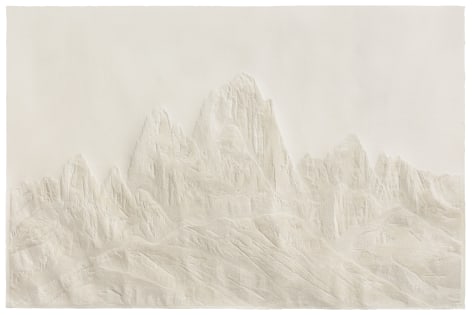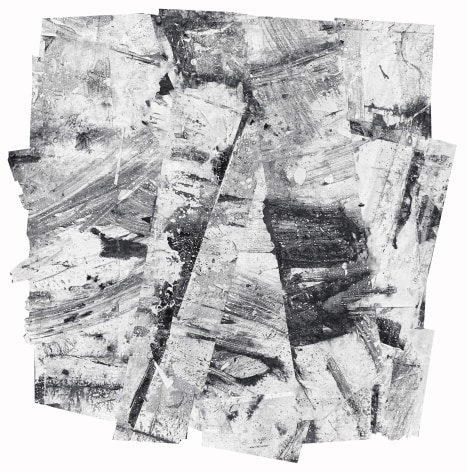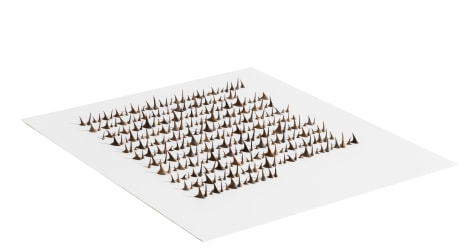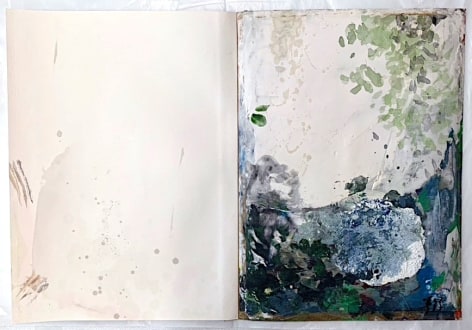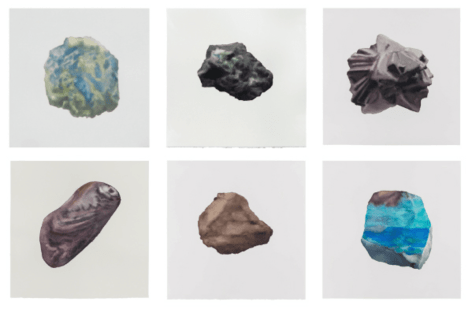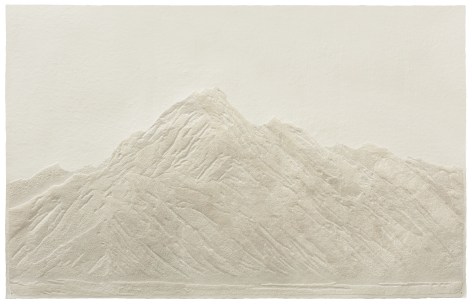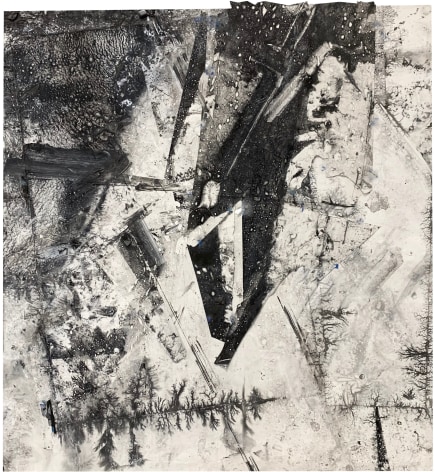In 2009 Chambers Fine Art presented Paper! Paper!, a survey of works on paper and works that utilize paper in different ways. For Asia Week 2021 Chambers Fine Art is pleased to present a new iteration of this exhibition, featuring a selection of works by Cui Fei, Fu Xiaotong, Guo Hongwei, Wu Jian’an, Yan Shanchun and Zheng Chongbin. In this new presentation, six Chinese artists of different generations offer surprising perspectives on the range of artistic practice in China today and the versatility of the material itself.
Cui Fei’s work is inspired by nature, her favored materials being natural materials such as vines, thorns, and seeds that she gathers herself. It was after her move to the US that she began her Manuscript of Nature series, when the chance discovery of some dried grape tendrils that had fallen off an installation made from grape vines led to a transformation in her process. The similarity that she detected between the sinuous form of the tendrils and Chinese calligraphy in the grass style was the first step in what was to become an ongoing investigation of the relationship between human beings and nature. The works on view in this exhibition are from her series entitled Read by Touch, where she uses rose thorns to mimic lines of text in a personal diary.
Painter Guo Hongwei also often uses nature and natural materials as his subject matter. He has achieved wide renowned for his mastery of the watercolor technique, often depicting plants, minerals, and animal life in exquisite detail. The watercolors in the exhibition are part of a long-standing series by the artist called The Illustration Book of Natural Form, a series of single rocks and minerals that he envisions to one day collect into a book of paintings. A large number of works from the series was recently collected by M+ Museum in Hong Kong.
Wu Jian’an and Fu Xiaotong are both well-known for the intense and inventive manipulation of paper. For Wu Jian’an, his continued development of the traditional art of Chinese paper-cut has led to increasingly intricate works of art. The two works in this exhibition are from his Color Ball series, intricately painted watercolors of overlapping spheres that reference the rich diversity of human society, where each individual is distinct and yet at the same time are connected to one another.
In contrast to the colorful imagery of Wu Jian’an’s works, Fu Xiaotong manipulates handmade Xuan paper using only the singular repeated act of piercing the paper’s surface using an awl, a needle used in traditional book-making. She is able to achieve a three-dimensional relief effect by adjusting the direction of her pinpricks, and in her latest work employs a circular pattern that a creates an even more sculptural effect, with areas of the paper protruding from the surface. For Asia Week, we present Fu’s traditional Chinese themes of water and mountain landscapes.
A resident of the San Francisco Bay Area for over three decades, Zheng is inspired by the region's distinctive atmospheric and environmental effects and rich ecologies, as well as by the California light and space movement. Although he moves freely across a variety of media, he has never abandoned his paintings for which he has developed a personal language that mixes traditional Chinese elements (ink, Xuan paper) with Western tools and materials (brushes, acrylic, and other media). Cognizant of the importance of the paper and ink in China’s art tradition, he expands the boundaries of these materials to create new forms of expression.
Yan Shanchun’s paintings also employ a mix of materials, although with very different outcome. His works result from the application of multiple layers of pigment, acrylic, ink and gypsum powder on paper. He has described how, after laying down Korean vellum paper and covering it with plaster powder, he proceeds “to sandpaper the surface before creating images with ink and cinnabar pigment… Depending on the design and composition, further layers will be applied to the surface, followed by sandpapering and further painting.” The work on view is from his latest series Fuchun, which uses more color than his previous West Lake series, and meant to recall the type of painting portfolio or ‘album’ that was popular in ancient China.

